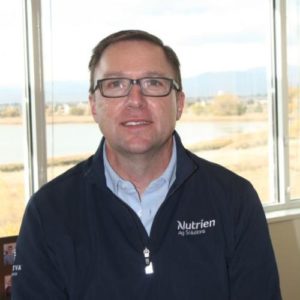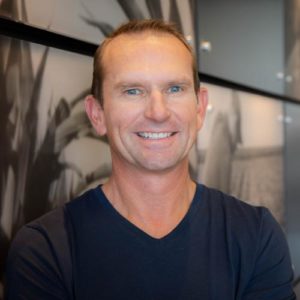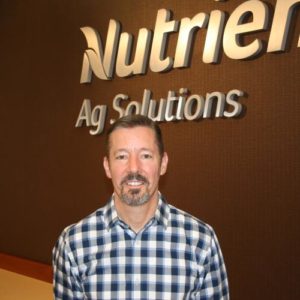How Nutrien Ag Solutions Is Leveraging the Farmer Connection
In consumer retailing, it’s understood today that the highly efficient and well-positioned retailer is able to command and control the suppliers and manufacturers that require a measure of shelf space to earn a slice of market share pie. The main stop on the road to riches runs through the likes of Walmart and Amazon.
The supply channel to the farmer is less straightforward, with speed bumps like incentive and rebate programs, product brokers, and e-commerce sites that cloud profit and value. There’s also the recent spate of consolidation, along with nagging trade issues and uncertainty with input supply that regularly invent and reinvent best practices, and finally, most importantly, delivering on the farmer’s need for service, counsel, and timely product delivery in an increasingly complex and variable-ridden agriculture industry.
But one axiom continues to ring true: Gaining and maintaining farmer business requires a boots-on-the-ground trusted adviser. And in the current business climate in agriculture, the retailer is in the best possible position to create a sustainable and profitable business by being the clearest conduit to the ultimate customer.

Michael Frank, Nutrien Ag Solutions
This prospect is what lured Michael J. Frank, Executive Vice President and CEO of Retail at Nutrien, the division also known as Nutrien Ag Solutions, to leave a 25-year career at what was then Monsanto in September 2017 to join the No. 1 CropLife 100 retail organization.
“I grew up on a farm in Saskatchewan, and what appealed to me about joining Nutrien was being able to get closer to the grower,” Frank says. “My first job at Monsanto was as a sales representative calling on growers, and I always liked that side of the business. With all of the consolidation going on at the farm gate and supplier levels, this role at Nutrien provided me an opportunity to work with a great team and advance the company’s strategy.”
Of course, also attractive were the extensive resources available through the Nutrien family, including complete input and seed lines, more than 1,000 locations coast-to-coast, and a growing international presence in Canada, Latin America, and Australia that provide a wide range of resources to tap. “The company is uniquely positioned in the supply chain to really drive the future model,” Frank says.
Taking it a step further, Frank adds, “A lot of people talk about being a solutions provider. The reality is the retailer is the only one who can be a solutions provider — not just us but anyone who has access to a full portfolio of tools and technologies. Being a solutions provider goes beyond just the products from an agronomy standpoint. It’s also the service and being digitally engaged with customers and being able to have credit and financial discussions with them — this is how we think about our business, being the full-service solutions provider. And I don’t think anyone else outside the retail industry has that opportunity.”
Managing Suppliers, Taking the Lead
In a scant two years, Frank implemented change in key areas of the retail division to fit the strategic plan. Internally, the management team was bolstered with the promotion of Brent Smith to Vice President, Marketing and Innovation, and the hiring of David Elser as Vice President, Strategic Supplier Management and Sustainable Agriculture. Both have decades of experience working in the trenches in the manufacturing sector and, like Frank, are enjoying the opportunity to plan and build the bridge between the farmer-customer and manufacturers.
“It’s been a fun transition from my supplier side role to here,” Elser says. “We’re really in a good place in the value chain.”
For the better part of a decade, Smith has been involved in Nutrien’s efforts to create product portfolios that address the needs of customers and provide agronomists with the widest possible range of solutions. As innovation began to show signs of slowing at the end of the 2000s, filling the gaps in product categories, such as soil and plant health, as well as nutrition and seed breeding, was a priority.
The latest challenges have emerged as the most recent wave of consolidation in crop protection and seed technology has finally settled down. Marketing plans from the basics, such as the Bayer PLUS Rewards program, raised new concerns among retailers about direct-to-farmer incentive programs that put retail in a compromised position.

Brent Smith, Nutrien Ag Solutions
“We have great partnerships with our suppliers, and I do think there is something productive around a healthy tension,” Smith says. “We continue to challenge our suppliers, and they challenge us, and at the end of the day I think it makes both of us better. We’re trying to be more strategic with our suppliers vs. simply buying and selling.”
“It starts with the farmer,” Elser adds, “and not one supplier has all the solutions that matter to the farmer. We get plenty of feedback from farmers that they don’t like rebate programs or the inherent selfishness of having to buy a certain fungicide with a certain seed.”
“Before the recent mergers there was at least consistency in approach, but as the whole thing has gone up in the air and now landed, it’s feeling a bit like 1997 with programs,” Smith says. “Farmers didn’t like it then and do not like it now. I think over the next 24 months we’ll find our way back to providing what’s best for farmers and realize the rebate schemes are not the best approach.”
On the positive, Elser and Smith note that a stronger relationship with basics is allowing Nutrien to provide valuable feedback on products and systems to the basics. “When we’re collaborating, we can bring in-field insights to R&D firms and provide guidance on pipeline discovery opportunities,” Elser says. “This allows them to use their investment and strength in cutting-edge research techniques, such as artificial intelligence and gene editing, to find new solutions.”
Investment in Efficiency and Facilities
Changes at the corporate office don’t mean much when they don’t extend to the farthest reaches of the company brand, where the customer experience resides. “Our sales agronomist in the field has been the most important part of the grower connection for the last three decades, and I think it will be important for the next three decades,” Frank says. “We do not want to do anything that disrupts that relationship — we want to give our sales people and our growers tools and technology that strengthen that relationship.”
An important factor in the foundation of highly functional local agronomy service is supply chain efficiency, which Frank says is still lacking. “We are looking at every aspect of supply chain and not measuring from how we did in the past but comparing it against the best in class retailers and manufacturers, like Walmart and Coca-Cola,” he explains. “We want to learn from them, to lean down the supply chain, and to be more predictable with product at the right place and right time. And also be more efficient with inventory, covering less miles and being able to track every jug, pound, and gallon we sell.”
In the present, Nutrien Ag Solutions is investing in technology and infrastructure to optimize efficiency and accuracy. “We are in the process of setting up distribution centers, which will hold more inventory,” Frank says. “We want to have a network of centers where we are able to bring product to any branch in the system within 24 hours.”
Nutrien is also creating a new forecasting tool that takes in weather, markets, and sales data and provides predictive information that allows Nutrien to be proactive rather than reactive about product demand and placement. It is also building new facilities — 20 were built last year, and 20 more will be complete by year’s end. “And we’re putting a lot of technology in these facilities to allow them to serve a broader area,” he adds. “The mindset of a facility every 20 miles is a thing of the past.”
Digital Engagement
Nutrien went all-in on digital engagement in July 2018 with the launch of a web-based omnichannel customer experience hub, including an e-commerce platform and better data accessibility for grower-customers. Sol Goldfarb, Head of Digital, was hired at precisely the same time to lead Nutrien’s efforts to build out new capabilities and solutions on the platform.

Sol Goldfarb, Nutrien Ag Solutions
Goldfarb has provided a unique perspective on digital capability development. His Silicon Valley roots date back to the now-defunct web browser, Netscape, but his most recent work helping retailer The Gap find a successful presence selling clothes on the Internet is what caught Nutrien’s attention.
On hiring for the position, Frank explains: “We looked within the industry first, but we really thought that we needed to bring in somebody from the outside. Someone that understood business-to-consumer marketing and engagement, and Sol has brought a lot of that. It’s been tremendously helpful.”
For his part, Goldfarb has spent a lot of time engaging location managers and farmers, staying humble, and learning everything he can about agriculture. “Selling clothes is fine, but feeding the planet is such a noble mission,” Goldfarb says. “I wanted to begin a new journey doing something important, and there’re not much that’s more important than that.”
One of his first observations was the lack of basic utility of information. “Technology in some areas is mind blowing, even space-age futuristic,” he says. “But in other frankly simple areas, it was totally absent. Those kinds of unsolved problems are the garden that I grow stuff in.”
A quick victory was adding the ability for farmers to print statements and pay bills online — not revolutionary but a relatively simple and valued capability. Goldfarb also appreciates the value of simple tools, like Tractor Time, which came with the acquisition of Agrible in 2018. “It answers a simple question: ‘Can I work safely in the field?’ It combines weather and soil moisture data to provide an answer to a critical question, and we should be doing more of this,” he says.
Goldfarb appreciates the power of technology and data but doesn’t believe the algorithm will replace humans anytime soon, if ever — and is certainly not on the radar for Nutrien. “The algorithm can get smarter with better data, but why would we supplant the relationship of agronomist and grower? The better, faster way is to improve is to focus on technology that supports the relationship,” he says.
On the e-commerce front, last year’s much ballyhooed platform release has proven to be a tool for better collaboration with agronomists than for farmers to order direct. Goldfarb notes that the release did create some internal heartburn for agronomists, but Nutrien simultaneously created a digital ordering platform for employees to allow them to order on the farmer’s behalf.
So far, farmers mostly use the site for product research, then consult the agronomist for advice before consenting to buy. In these cases, the order most commonly comes through the agronomist.
Currently, Nutrien is continuing work on a farm planning tool beta program that will allow the grower and the agronomist to create a plan on a field-by-field and crop-by-crop basis. The program will also let the grower test different product and input scenarios to get a sense for likely cost and performance, allowing for more informed decision making. The system will be designed to create a plan of action for field operations and take in in-season weather and scouting data to facilitate better decisions as the season unfolds.
Nutrien Ag Solutions is a massive and formidable competitor in the retail space, but its internal focus on personal customer service at the location level serves as proof that the value of the trusted adviser in agriculture is not just important but absolutely indispensable to the sustainability of the entire retail channel.






